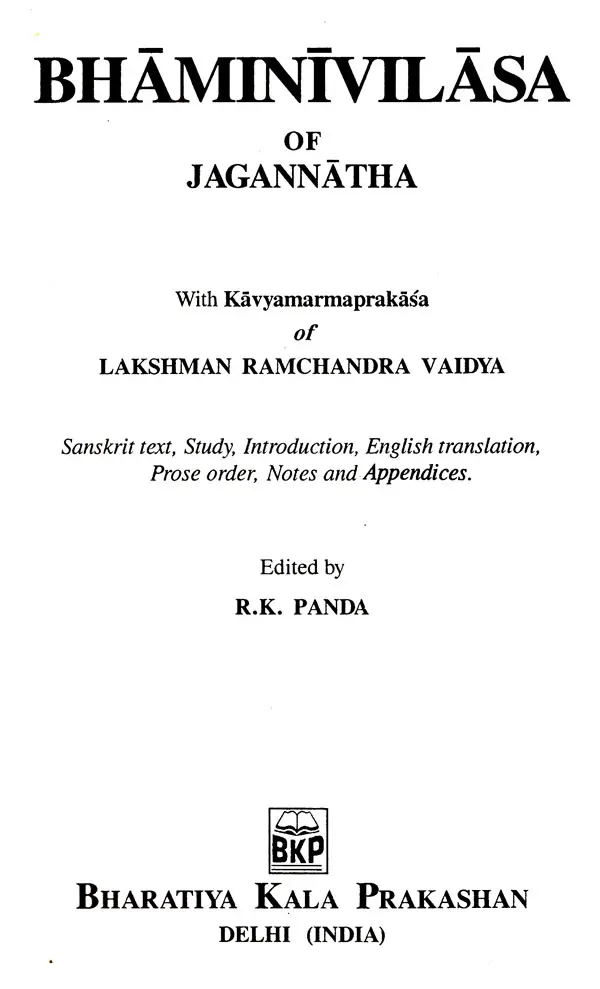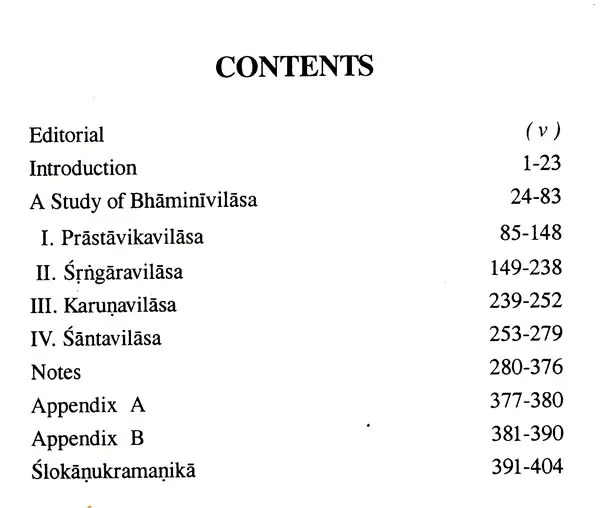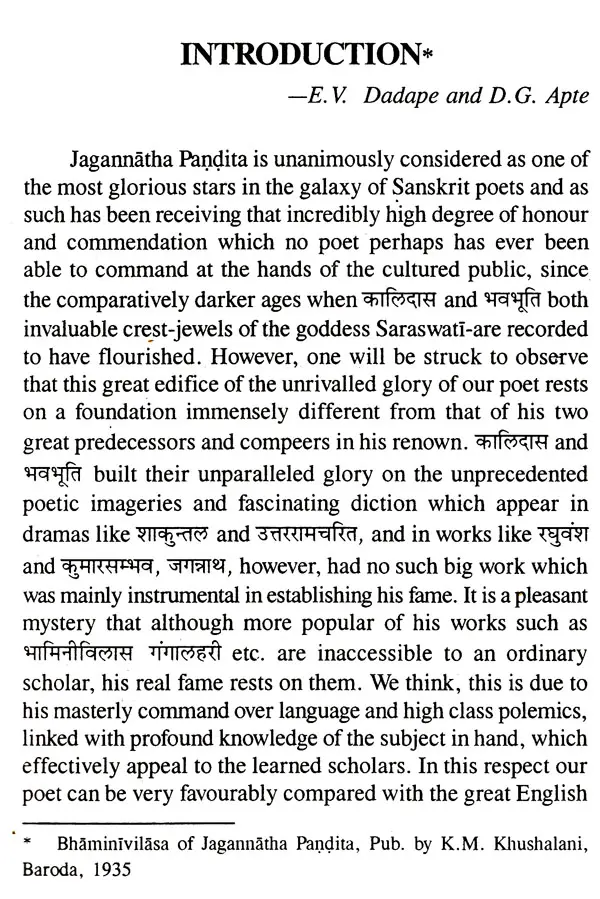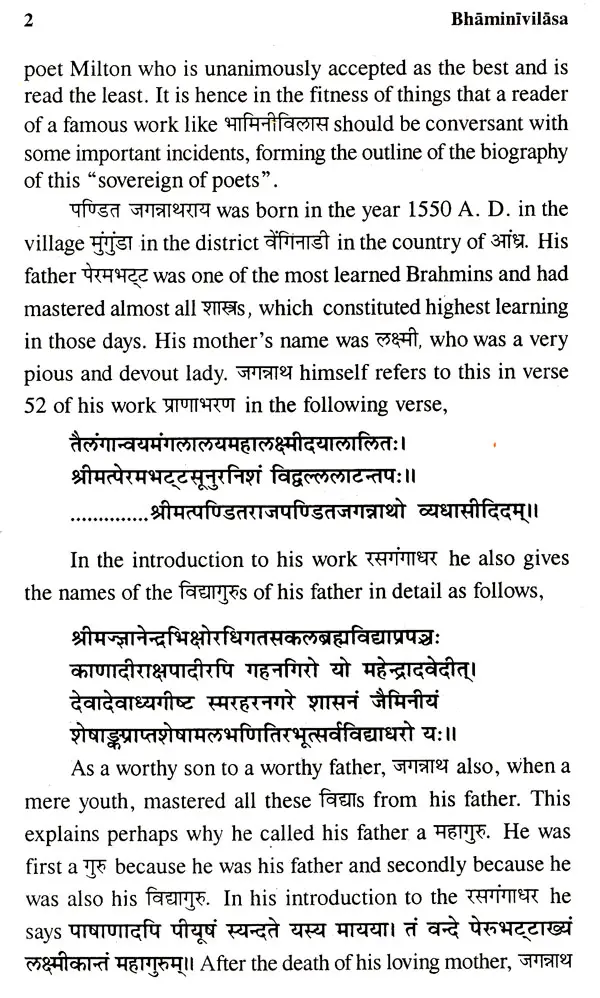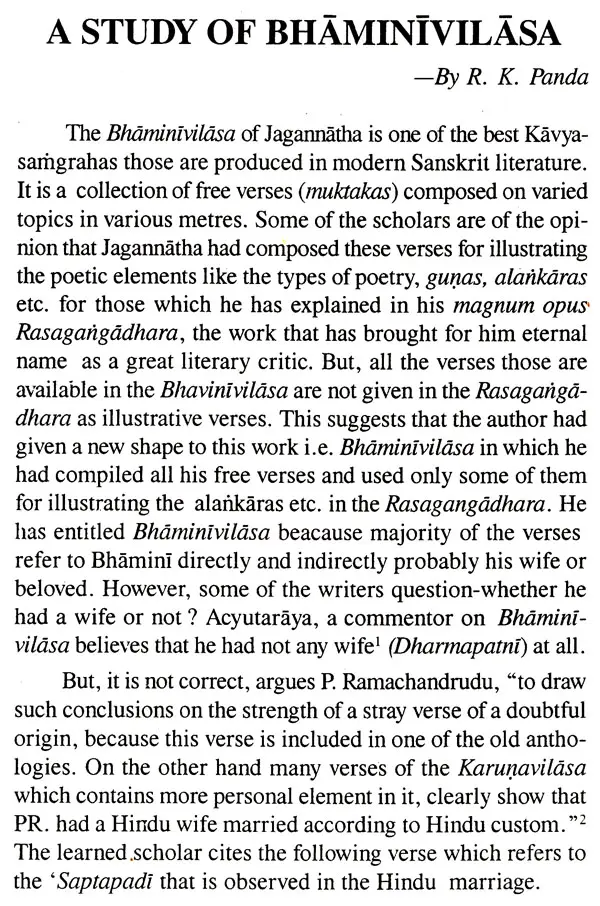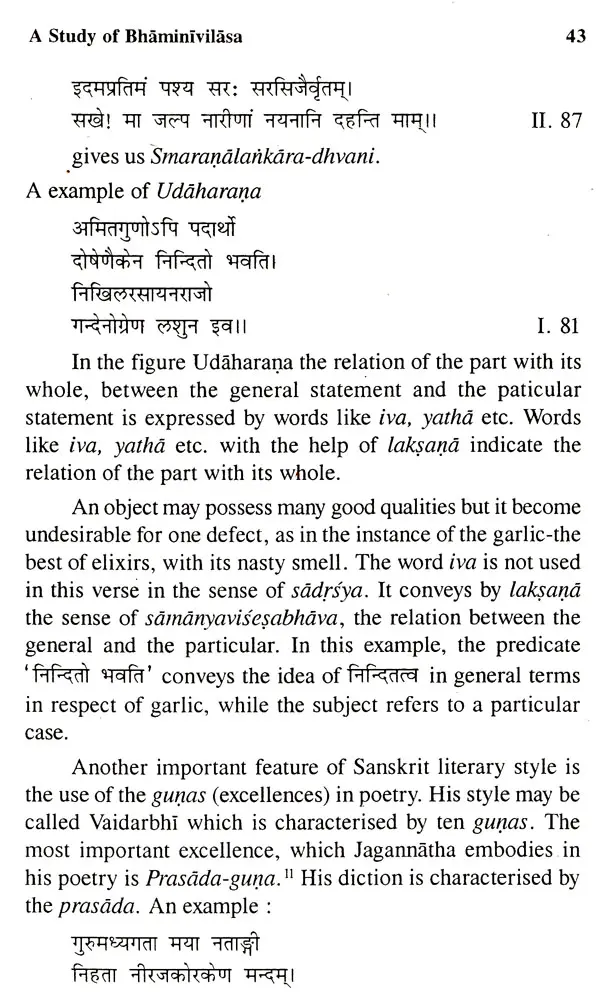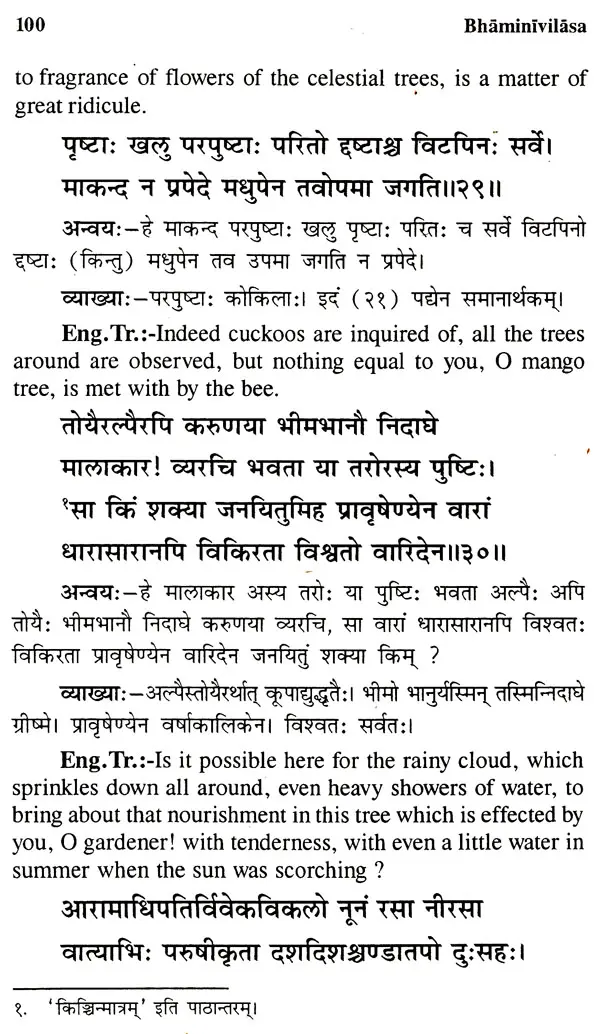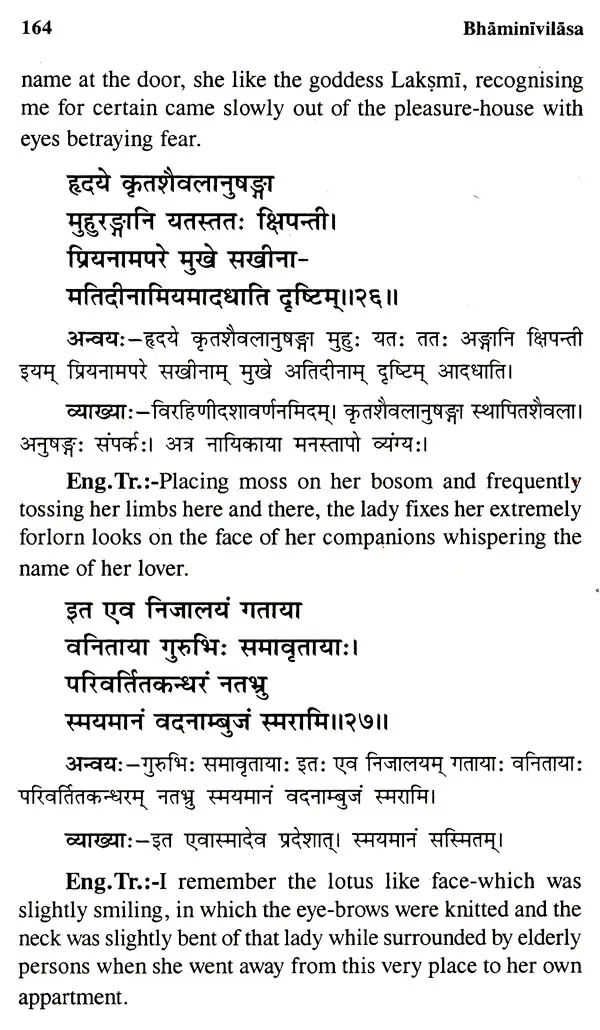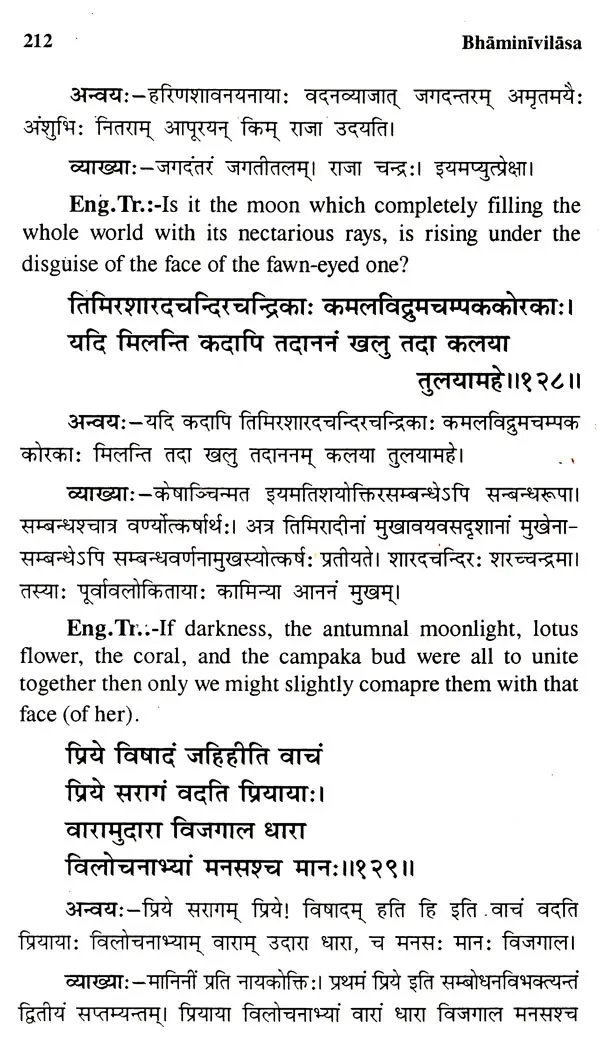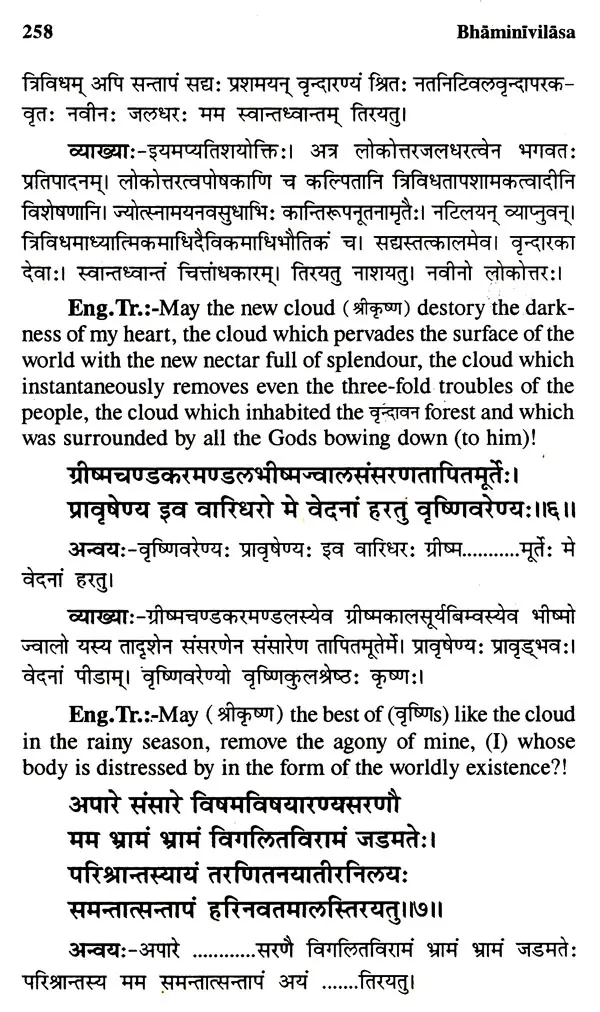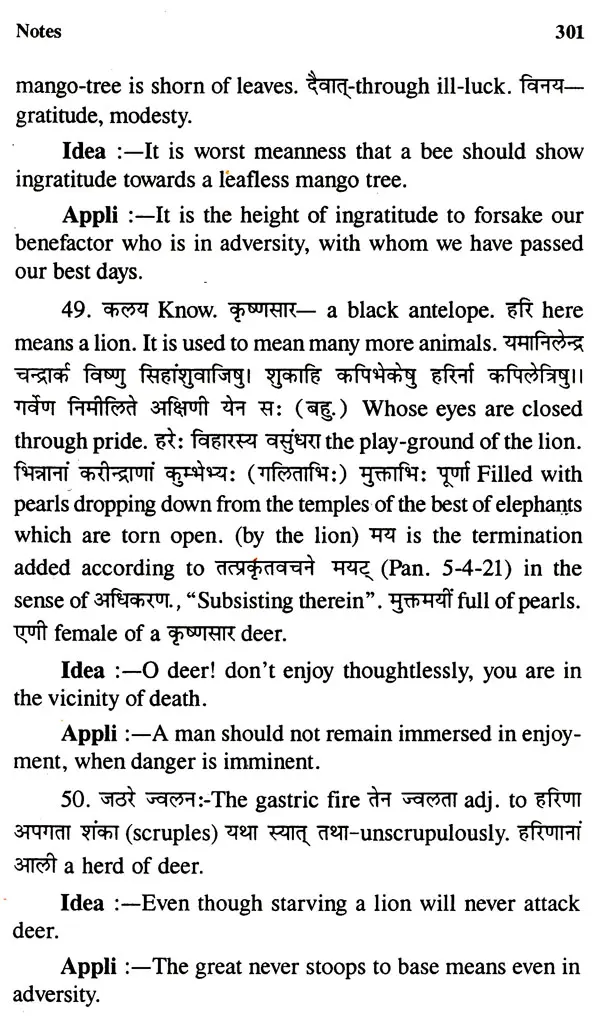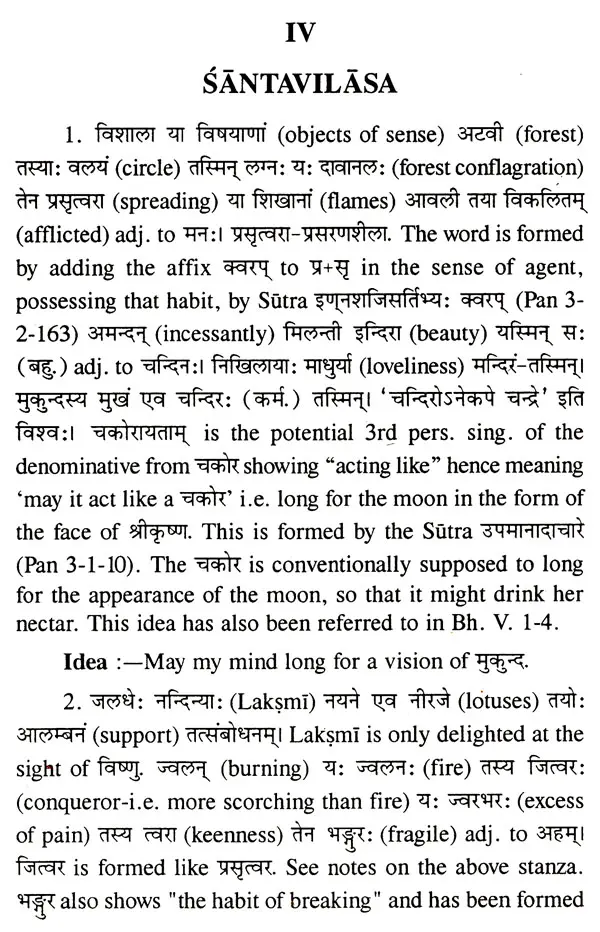
Bhaminivilasa of Jagannatha with Kavyamarmaprakasa of Lakshman Ramchandra Vaidya
Book Specification
| Item Code: | UAN633 |
| Author: | R. K. Panda |
| Publisher: | Bharatiya Kala Prakashan |
| Language: | SANSKRIT TEXT WITH ENGLISH TR |
| Edition: | 2004 |
| ISBN: | 8180900126 |
| Pages: | 415 |
| Cover: | HARDCOVER |
| Other Details | 8.80 X 5.80 inch |
| Weight | 650 gm |
Book Description
The second Śrngaravilasa contains the highest number of verses giving passionate expression to the emotion of love. So this chapter is a good specimen of erotic poetry. The poet has an extra-ordinary power to describe the abstract thoughts and feelings.
The third Karunavilāsa depicts pathetic sentiment and it is an elegiac poetry. This gives expression to poet's serious pathos.
The fourth Santavilāsa which contains lyrical verses expressing poet's devotion for God. It seems to be a spontaneous outburst of the poet's spiritual feeling. The prevailing tone of the verses is one of dedication and surrender to the Lord Krishna.
The Bhaminivilása is undoubtedly an important work of Panditaraja Jagannatha. It is the collection of detached verses indepen-dent of each other and so, it may be called a Kosakavya. According to Dr. Keith, this kavya is admirable in many respects as an erotic poem, an elegy and a store of gnomic sayings. The book is divided into four vilasas-the Prästävika, Sṛngāra, Karuna and Santaviläsa. The Prästävika viläsa is a collection of gnomic and didactic verses. These are very grand in conception and in expression. Every verse is a ready illustration of anyokti or aprastutaprasamsa. The subject matter of these sayings is numerous. Generally philosophy, morals and practical advice to life are suggested through these verses. The second chapter called Srigaravilāsa contains the highest number of verses giving passionate expression to the emotion of love. So this chapter is a good specimen of erotic poetry. Here each stanza is a complete unit of sense, expression and imagery and it presents a daintily finished picture of the emotion or a situation. The poet has depicted the reactions and subtle variations in the moods and fancies of the lover and the beloved. The poet has an extra ordinary power to describe the abstract thoughts and feelings.
The third Karunaviläsa depicts pathetic sentiment and it is an elegiac poetry. This gives expression to poet's serious pathos.
**Contents and Sample Pages**
